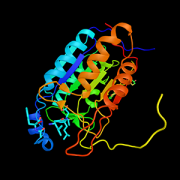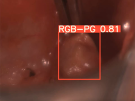Heart anatomy determines outcomes of valve repair for single ventricle hearts after Fontan procedure

The data shows that the valve repair surgery itself doesn’t increase the likelihood of heart transplant or death. Instead, it is only those with right ventricle dominant heart function who are significantly more likely to have such a negative outcome.
A new study in the Journal of the American College of Cardiology finds the anatomy of the heart is a key predictor of how efforts to repair atrioventricular valve regurgitation — or a leaky heart valve — will impact children with single ventricle heart defects who have undergone a Fontan surgical procedure.
The study uses retrospective data from the largest database of patients who have had the Fontan procedure, the Australia and New Zealand Fontan Registry. The data shows that the valve repair surgery itself doesn’t increase the likelihood of heart transplant or death. Instead, it is only those with right ventricle dominant heart function who are significantly more likely to have such a negative outcome.
It was conducted by cardiac surgeons at Royal Children’s Hospital, including Yves d’Udekem, M.D., Ph.D., who is now chief of cardiac surgery at Children’s National Hospital. Dr. d’Udekem presented the findings at the recent American College of Cardiology Scientific Sessions in Washington, D.C.
What this means
Until now, it was unclear why patients who had undergone a Fontan heart procedure were more likely to need a heart transplant or die after they also underwent surgery to repair atrioventricular valve regurgitation. This type of leaking valve is common in patients who have undergone a Fontan procedure, and it can also be dangerous if left untreated. But because existing data showed poor outcomes following atrioventricular valve repair, it was considered high risk to perform this repair on children with Fontan circulation.
However, this study drilled down into the outcomes of atrioventricular valve repair for these patients and found that it isn’t the surgery that leads to a poor outcome. Instead, it’s a specific anatomic feature — having a dominant right ventricle — that is predictive of the outcome.
Up to now, it was unclear whether surgery should be offered to all patients with a Fontan circulation who had leaky atrioventricular valves. This study shows that things are different for patients with dominant left or dominant right ventricle. For patients with dominant right ventricle, leaving this regurgitation not repaired is much more likely to lead to death and transplantation, and these patients should be operated at the earlier stages of the deficiency of their valves.
The hold-up in the field
One of the biggest challenges to identifying evidence-based best practices for children born with single ventricle heart defects, which are critical congenital heart defects, is the small number of patients at any one institution each year. The Australia and New Zealand Fontan Registry, founded by Dr. d’Udekem and the team at Royal Children’s Hospital, forms one of the world’s longest standing databases of patient information, including outcomes, for this population.
The patient benefit
This data can help doctors and families make the best care decisions possible for children with single ventricle defects by understanding how each child’s unique anatomy may impact how their heart will respond to treatment.
What’s next
Dr. d’Udekem hopes results from this study will improve how doctors strategize and recommend (or not) surgical repair of atrioventricular valve regurgitation. Additionally, the study shows the value of centralized patient registries and data for informing the standard of care. Similar registries across the world may promise to provide even greater insight into the long-term outcomes for patients born with these congenital heart conditions.











